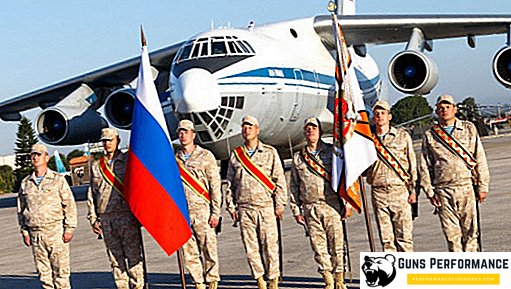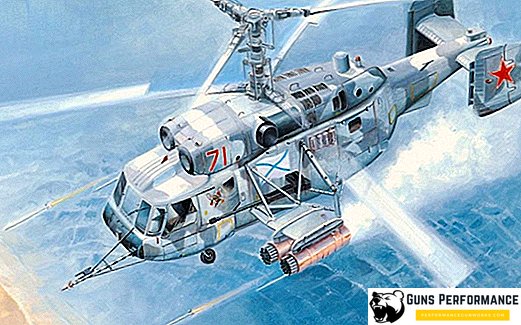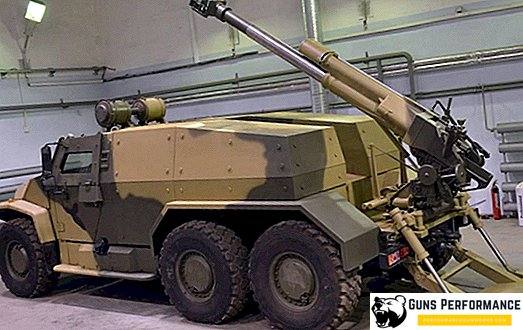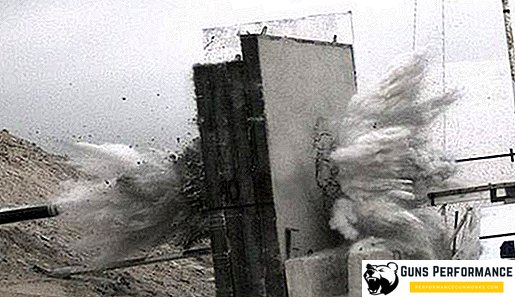
At the beginning of the last century, the mortar has become an integral part of the weapons of the ground forces, and the value of these weapons has not decreased in our days. 2B9 "Cornflower" - a unique automatic mortar, created in the 70s of the last century, it is still in service with the Russian army. This 82-mm mortar can produce up to 120 minutes per minute, as well as firing at a flat trajectory, which is atypical for this type of artillery weapon.
Outwardly, the 2B9 "Cornflower" is very similar to a conventional gun, but the appearance and structure of its ammunition clearly indicate that we are dealing with a mortar.
Mortar 2B9 "Cornflower" took part in several conflicts and proved to be a very effective weapon. In addition to the USSR, it was produced under license in Hungary. In China, "Cornflower" was copied and received the name "Type 99" or W99.
There are several modifications of the mortar, these weapons have repeatedly tried to make self-propelled by installing on various types of military equipment or vehicles.
Today "Cornflower" is in service with the Russian armed forces, as well as the Armed Forces of Ukraine, Vietnam and the PRC.
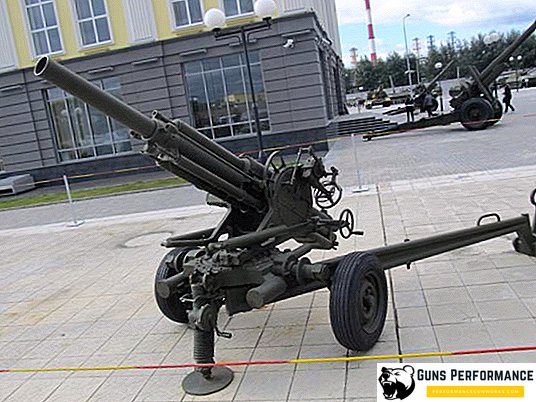
History of creation
The history of the creation of the automatic mortar 2B9 "Cornflower" began in the 40s of the last century, shortly after the end of the war. In 1946, an automatic 82-mm mortar was developed, which used the recoil energy of the barrel to operate the automation. This technical solution could not be called innovative in artillery, but it was first used for mortars. The product was named CAM, it was adopted.
Initially, KAM was planned to be installed in casemates and other long-term fortifications. A few years later, a field version of an automatic 82 mm mortar was created, but for unknown reasons it was never accepted for service.
Only in 1967, they returned to this project again. Three years were spent on weapons revision, and already in 1970 a new 82 mm mortar was put into service. It received its name in honor of one of the most beautiful wildflowers - cornflower.
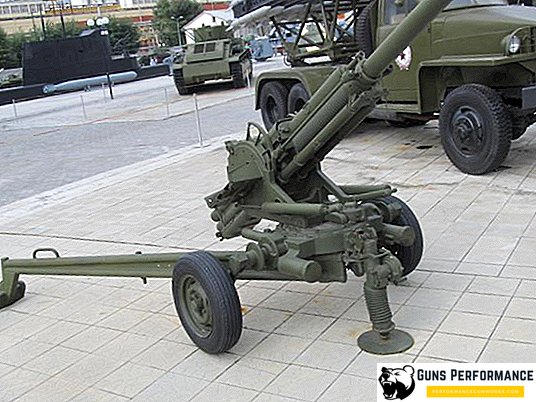
Initially, the 2B9 Cornflower mortar had a water-cooled barrel, but after a few years, the designers concluded that air-cooling would be more convenient. The casing in which the barrel was placed and the water was poured was removed, the walls of the barrel were made thicker and supplied with its surface with ribs acting as a radiator.
The new modification "Cornflower" received the name 2B9M, it is easy to distinguish it from its predecessor on the characteristic ribbed trunk. Subsequently, the modernization fully justified itself: the mortar became simpler, easier, better suited for desert conditions, where water is in great shortage. She was commissioned in 1982 and launched into serial production.
The classic mortar has one serious drawback: each shot slightly displaces it, causing deformation of the soil under the base plate. Therefore, the mortar calculation has to constantly re-target their weapons.
In the mortar 2B9 "Cornflower" this problem is partially solved: the recoil energy from the shot goes to reloading, in addition, it is extinguished by hydraulic shock absorbers located around the barrel. That is why this 82-mm mortar has a high accuracy of fire, even when maintaining automatic fire.
"Cornflower" can be charged from the side of the barrel (in this case there is a single shooting), and from the breech. At the same time in the mortar charges are charged with four mines each, and automatic fire is conducted. The peculiarity of the 2B9 "Cornflower" is that it can shoot along a flat trajectory, with a minimum angle of elevation (from −1 ° to 85 °).
Description of the weapon
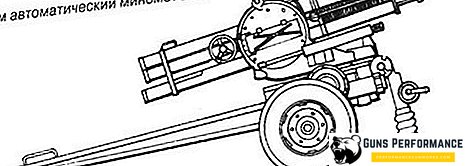
The 82-mm mortar 2B9 "Cornflower" is intended for the destruction of the enemy infantry, both openly and in field shelters.
The operation of the mortar automation is based on the recoil of the free gate, the shot is made with the shutter open.
The mortar consists of a barrel, an anti-recoil mechanism, a bolt and a bolt box, as well as two machines: the upper and the lower one. The lower machine is connected to the chassis. The mortar has a small weight (just over 600 kg), so for short distances it can easily be moved by the forces of calculation.
The barrel connects to the receiver with a thread. The recoil device consists of three spring rods, two of which are below the bolt box, and one is installed above. The fire mode lever and reloading flywheel are located at the bottom of the receiver, and the trigger lever is on its upper surface. The receiver casing is located on the right, each cage contains four mines.
Mortar rate of fire is more than 170 shots per minute, and the pace (depending on the speed of loading) - 100-120 shots.
On the left handles are turning and lifting mechanisms.
Chassis "Cornflower" - two-wheeled with suspension. When moving into a firing position, the mortar rests on a jack and a bipod, and the wheels are hung out.
The mortar is equipped with a PAM-1 sight.
For shooting, a 3B01 shot is used, it includes a 82-mm mine and a powder propellant charge. The mass of mines is 3.1 kg. The minimum range of "Cornflower" - 800 meters, maximum - more than four kilometers. When broken mine gives up to 600 fragments, which provide damage within a radius of 18 meters.
Mortar calculation consists of four people: the commander, loader, gunner and ammunition carrier (he is the driver).
For transportation of the mortar and ammunition it uses a transport vehicle (GAZ-66-05).
In the 1980s, the Cornflower was attempted to make it self-propelled by installing it on the rear part of the MTLB tracked tractor case.

Combat use
The baptism for the automatic mortar "Cornflower" was the war in Afghanistan. It was very widely used by the Soviet troops during this conflict. Usually, as part of a mortar battery of a motorized rifle regiment, "Cornflowers" were armed with one or two platoons. Each of them received three mortars.
It was in Afghanistan that the mortar began to be installed on an MTLB for the first time, although this is not provided for either by the design of the tractor or by instructions for using the mortar. However, as a result of such "initiative", the troops received a new self-propelled gun with excellent rate of fire, maneuverability and high combat effectiveness.
2B9 "Cornflower" was actively used in both Chechen companies. It was used by both federal troops and Chechen separatists. There is information about the use of this mortar in the Georgian-Abkhaz conflict.
Currently, "Cornflower" is actively used in hostilities in the east of Ukraine. It is used by both Ukrainian government forces and separatists.
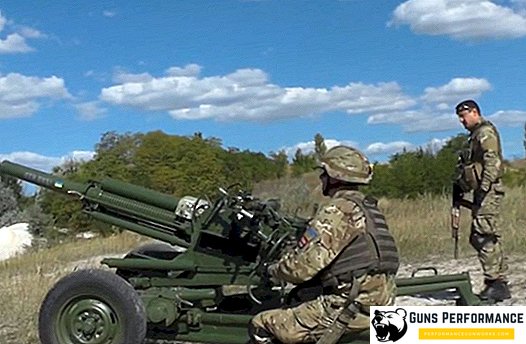
Mortar Modifications
Since the start of mass production of the 82-mm mortar "Cornflower" has undergone one major modernization, which concerned the replacement of water cooling of the barrel to the air. Attempts to make a self-propelled gun from a mortar were also repeatedly made. The main modifications of the mortar "Cornflower":
- 2B9 - modification with liquid-cooled barrel;
- 2B9M - modification with air-cooled barrel;
- Type 99 - model created in the army of the People's Republic of China;
- The 82-mm self-propelled gun 2B9M based on the BMP-1 is a development of Kazakhstan, presented in 2014.
Specifications
Below are the TTX mortar 2B9 "Cornflower".
| Payment | 4 people |
| Mortar mass | 632 kg |
| Max. firing range | 4700 m |
| Declination / elevation angles, degrees | -1/+85 |
| Horizontal angle, hail. | 60 |
| Initial velocity of the projectile, m / s | 270-272 |
| Rate of fire, shots / min | 170 |




